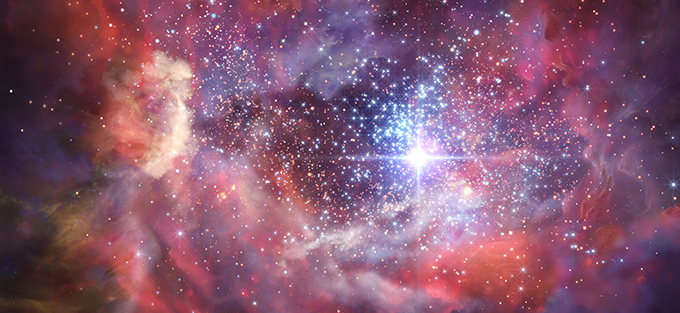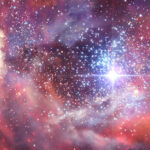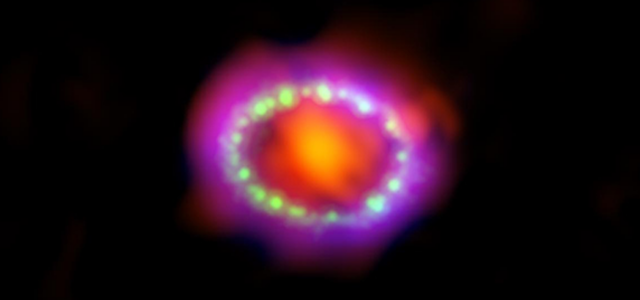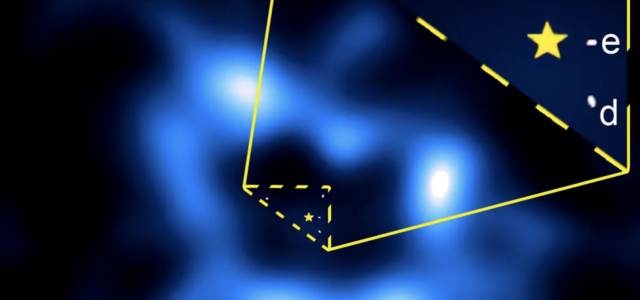ALMA sets a dusty distance record
Read time: 3 minutes
ALMA has set a new record. It has observed a galaxy known as A2744_YD4 – the most distant galaxy ever studied by the 66-dish observatory. The galaxy is so remote that its light took a whopping 13.2 billion years to reach Earth. This means that astronomers are seeing the galaxy not as it is now, but as it appeared 13.2 billion years ago, when the Universe was still very young.
Surprisingly, A2744_YD4 turns out to be quite dusty. The total mass of the galaxy is 2 billion times the mass of our Sun. But from the ALMA observations, it follows that the galaxy contains 6 million solar masses worth of dust.
13.8 billion years ago, our Universe started out as a glowing mass of gas – hydrogen and helium. But the dust particles in the distant galaxy are made of silicon, carbon and aluminum. Those elements weren’t present at the Big Bang. So where does the dust come from?
The answer: supernova explosions. Apparently, just 400 million years after the Big Bang, the first massive stars started to form in galaxies like A2744_YD4. During their brief lives,
these stars produced heavier elements in their cores, through nuclear fusion. When the stars exploded as supernovas, the heavy elements were scattered throughout the galaxy. Over time, they coalesced into tiny dust grains, just a hundred thousandth of a millimeter across. These are the dust particles observed by ALMA, at a time when the Universe was just 600 million years old – about four percent of its current age.
A2744_YD4 is still forming new stars at a prodigious rate. On average, twenty new stars are born each year in the distant galaxy. In contrast, our own Milky Way galaxy only produces about one new star per year.
The new ALMA observations help astronomers to better understand events in the very early Universe. They may answer questions like: When did the first galaxies form? When were the first stars born? And how did the Universe become enriched with heavier elements than hydrogen and helium?
The discovery also shows that ALMA is very capable of observing extremely distant objects in the Universe. It probably won’t be long before ALMA shatters its own distance record.
What?

A2744_YD4 is a large and massive galaxy. However, it’s so far away that it’s hard to see at all, even with the largest telescopes. Luckily, the galaxy happens to be located behind a foreground cluster of galaxies in the constellation Sculptor. The gravity of this cluster
(known as Pandora’s Cluster) distorts and magnifies the image of the faint background object. Thanks to this gravitational lensing effect, A2744_YD4 became visible to ALMA, albeit barely.
Who?
The team that carried out the observations of A2744_YD4 was led by Nicolas Laporte and Richard Ellis, two astronomers at University College London in the United Kingdom. Nicolas and Richard worked together with many colleagues from Chile and various countries in Europe. The new results are described in an article in Astrophysical Journal Letters, a professional astronomy magazine.

ALMA URL



